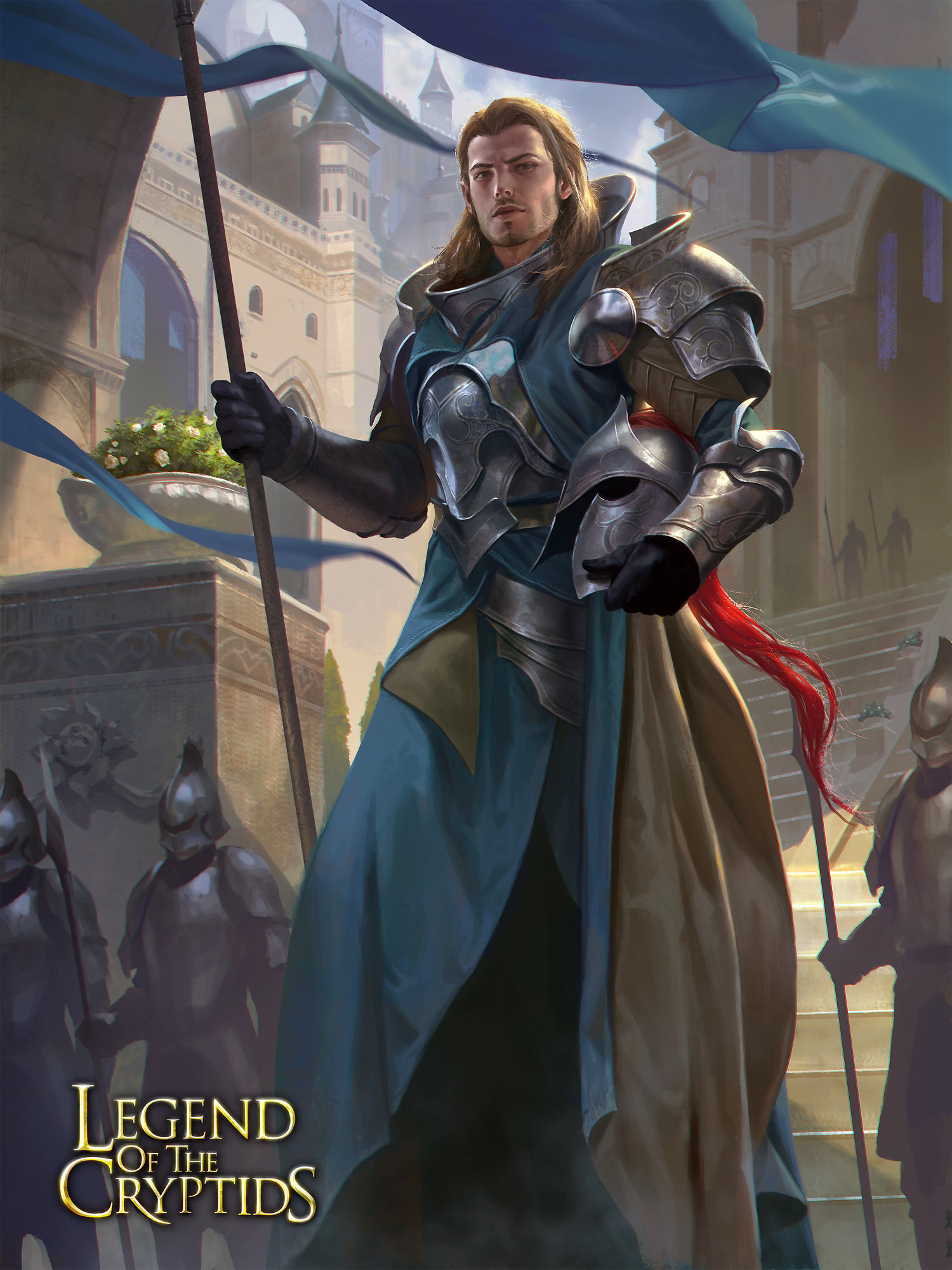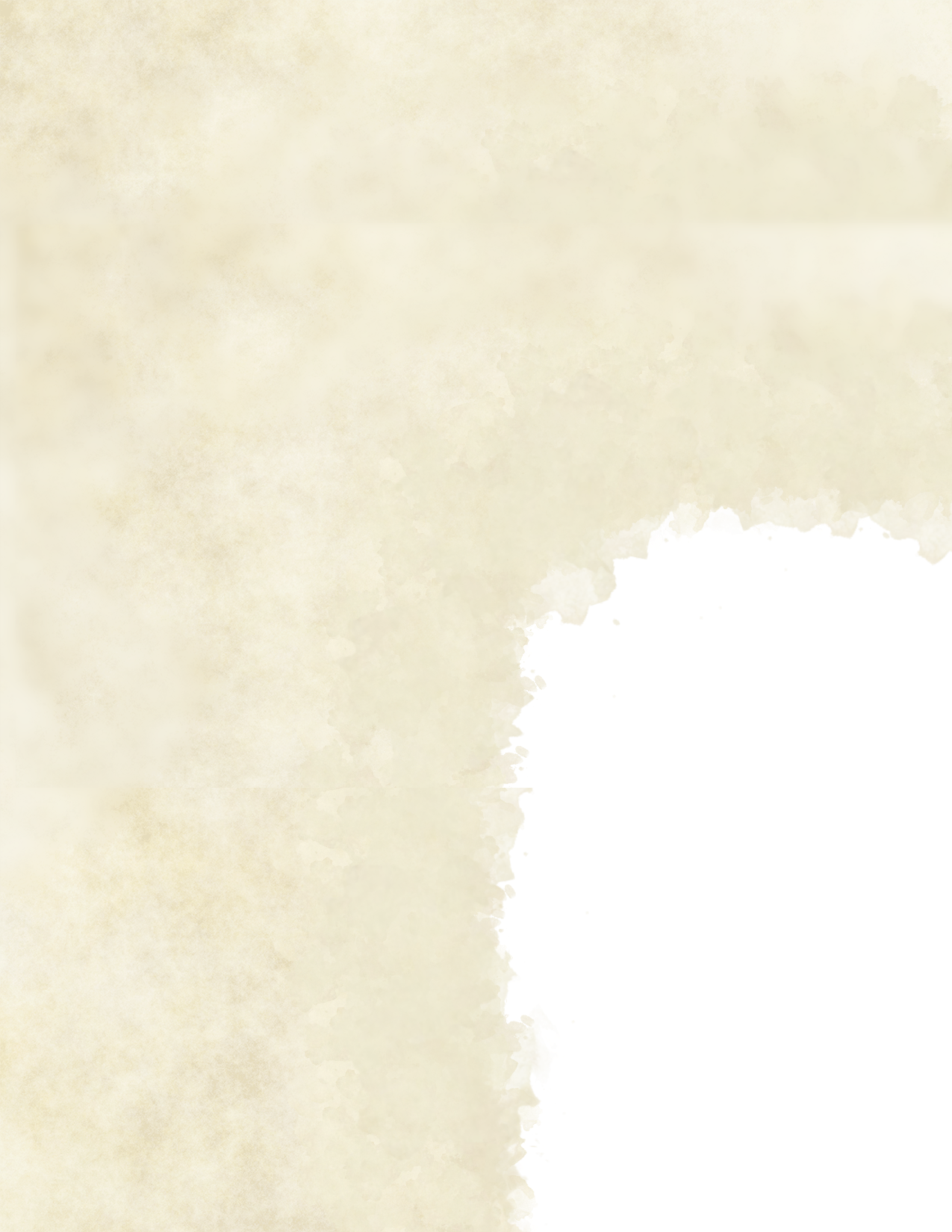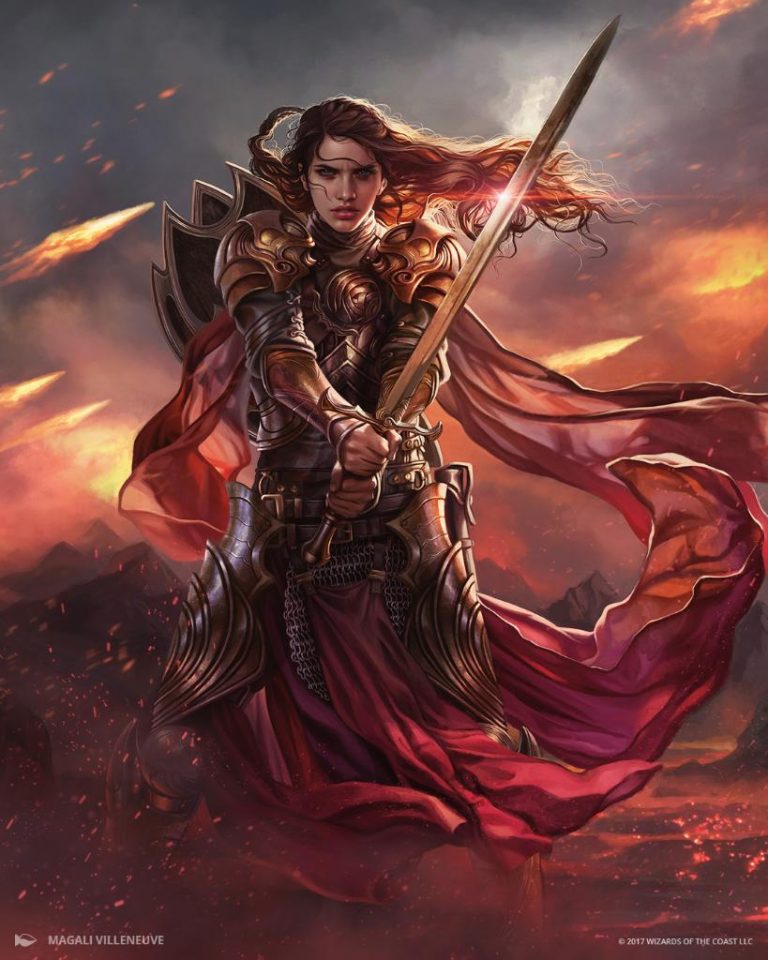
VERSION 1.5
The Indomitable Fighter
A human in clanging plate armor holds her shield before her as she runs toward the massed goblins. An elf behind her, clad in studded leather armor, peppers the goblins with arrows loosed from his exquisite bow. The half-orc nearby shouts orders, helping the two combatants coordinate their assault to the best advantage.
A dwarf in chain mail interposes his shield between the ogre’s club and his companion, knocking the deadly blow aside. His companion, a half-elf in scale armor, swings two scimitars in a blinding whirl as she circles the ogre, looking for a blind spot in its defenses.
A gladiator fights for sport in an arena, a master with his trident and net, skilled at toppling foes and moving them around for the crowd’s delight—and his own tactical advantage. His opponent’s sword flares with blue light an instant before she sends lightning flashing forth to smite him.
All of these heroes are fighters, perhaps the most diverse class of characters in the worlds of Dungeons & Dragons. Questing knights, conquering overlords, royal champions, elite foot soldiers, hardened mercenaries, and bandit kings—as fighters, they all share an unparalleled mastery with weapons and armor, and a thorough knowledge of the skills of combat. And they are well acquainted with death, both meting it out and staring it defiantly in the face.
Well-Rounded Specialists
Fighters learn the basics of all combat styles. Every fighter can swing an axe, fence with a rapier, wield a longsword or a greatsword, use a bow, and even trap foes in a net with some degree of skill. Likewise, a fighter is adept with shields and every form of armor. Beyond that basic degree of familiarity, each fighter specializes in a certain style of combat. Some concentrate on archery, some on fighting with two weapons at once, and some on augmenting their martial skills with magic. This combination of broad general ability and extensive specialization makes fighters superior combatants on battlefields and in dungeons alike.
Trained for Danger
Not every member of the city watch, the village militia, or the queen’s army is a fighter. Most of these troops are relatively untrained soldiers with only the most basic combat knowledge. Veteran soldiers, military officers, trained bodyguards, dedicated knights, and similar figures are fighters.
Some fighters feel drawn to use their training as adventurers. The dungeon delving, monster slaying, and other dangerous work common among adventurers is second nature for a fighter, not all that different from the life he or she left behind. There are greater risks, perhaps, but also much greater rewards—few fighters in the city watch have the opportunity to discover a magic flame tongue sword, for example.
Creating a Fighter
As you build your fighter, think about two related elements of your character’s background: Where did you get your combat training, and what set you apart from the mundane warriors around you? Were you particularly ruthless? Did you get extra help from a mentor, perhaps because of your exceptional dedication? What drove you to this training in the first place? A threat to your homeland, a thirst for revenge, or a need to prove yourself might all have been factors.
You might have enjoyed formal training in a noble’s army or in a local militia. Perhaps you trained in a war academy, learning strategy, tactics, and military history. Or you might be self-taught—unpolished but well tested. Did you take up the sword as a way to escape the limits of life on a farm, or are you following a proud family tradition? Where did you acquire your weapons and armor? They might have been military issue or family heirlooms, or perhaps you scrimped and saved for years to buy them. Your armaments are now among your most important possessions—the only things that stand between you and death’s embrace.
Quick Build
You can make a fighter quickly by following these suggestions. First, make Strength or Dexterity your highest ability score, depending on whether you want to focus on melee weapons or on archery (or finesse weapons).
Your next-highest score should be Constitution, or Intelligence if you plan to adopt the Eldritch Knight martial archetype.
Second, choose the soldier background.
Table Of Contents
| Topic | Page |
|---|---|
| Class Features | 2 |
| Class Table | 2 |
| Combat Maneuvers | 5 |
| Martial Archetypes | 6 |
| Eldritch Knight | 6 |
| Knight Banneret | 8 |
| Sentinel | 9 |
| Skirmisher | 10 |
| Swordmaster | 11 |
| Vanguard | 12 |
| Revised Feats | 13 |
Class Features
As a fighter, you gain the following class features.
Hit Points
- Hit Dice: 1d10 per fighter level
- Hit Points at 1st Level: 10 + your Constitution modifier
- Hit Points at Higher Levels: 1d10 (or 6) + your Constitution modifier per fighter level after 1st
Proficiencies
- Armor: All armor, shields
- Weapons: Simple weapons, martial weapons
- Tools: None
- Saving Throws: Strength, and either Dexterity or Constitution
- Skills: Choose two skills from Acrobatics, Animal Handling, Athletics, History, Insight, Intimidation, Medicine, Perception, Persuasion, and Survival
Equipment
You start with the following equipment, in addition to the equipment granted by your background:
- (a) leather armor, (b) scale mail, or (c) chain mail
- (a) a shield or (b) a ranged weapon and a quiver with 20 pieces of ammunition
- (a) a dungeoneer's pack or (b) an explorer's pack
- Three melee weapons
Battle Instinct
You are always ready for a fight and have a knack to quickly assess a combat situation.
You can add your proficiency bonus to your initiative rolls.
By 9th level, your instincts are so honed that you also have advantage on initiative rolls, and you can't be surprised while you are conscious.
Quick Switch
You also know how to quickly get ready for battle.
Once on each of your turns, you can draw or stow one weapon or don or doff a shield (no action required).
Fighting Styles
At 1st level, you adopt a particular style of fighting as your specialty. Choose one of the following options. You can't take a Fighting Style option more than once, even if you later get to choose again.
Whenever you gain a level in this class, you can choose one of the Fighting Styles you know and replace it with another Fighting Style from the list.
You can choose an additional Fighting Style when you reach 4th, 8th, 12th, and 16th level in this class.
Revised Fighting Styles are optional but recommended.
The Fighter
| Level | Proficiency Bonus | Features | Fighting Styles | Superiority Dice | Second Wind Max. HD |
|---|---|---|---|---|---|
| 1st | +2 | Battle Instinct, Quick Switch, Fighting Styles | 1 | — | — |
| 2nd | +2 | Combat Maneuvers, Martial Superiority | 1 | 2d4 | — |
| 3rd | +2 | Martial Archetype, Second Wind | 1 | 2d4 | 1 |
| 4th | +2 | Ability Score Improvement | 2 | 2d4 | 1 |
| 5th | +3 | Action Surge (one use), Extra Attack | 2 | 3d6 | 1 |
| 6th | +3 | Indomitable (one use) | 2 | 3d6 | 1 |
| 7th | +3 | Know your Enemy, Martial Archetype Feature | 2 | 3d6 | 2 |
| 8th | +3 | Ability Score Improvement | 3 | 3d6 | 2 |
| 9th | +4 | Battle Instinct Improvement, Combat Maneuvers Improvement |
3 | 4d8 | 2 |
| 10th | +4 | Ability Score Improvement | 3 | 4d8 | 2 |
| 11th | +4 | Action Surge (two uses), Martial Archetype Feature | 3 | 4d8 | 3 |
| 12th | +4 | Indomitable (two uses) | 4 | 4d8 | 3 |
| 13th | +5 | Commanding Presence | 4 | 5d10 | 3 |
| 14th | +5 | Ability Score Improvement | 4 | 5d10 | 3 |
| 15th | +5 | Martial Archetype Feature | 4 | 5d10 | 4 |
| 16th | +5 | Ability Score Improvement | 5 | 5d10 | 4 |
| 17th | +6 | Action Surge (three uses) | 5 | 6d12 | 4 |
| 18th | +6 | Indomitable (three uses) | 5 | 6d12 | 4 |
| 19th | +6 | Ability Score Improvement | 5 | 6d12 | 5 |
| 20th | +6 | Martial Archetype Mastery | 5 | 6d12 | 5 |
Archery (revised)
Your ranged attacks ignore half cover and treat three-quarters cover as half cover instead.
Blind (new)
You have blindsight with a range of 10 feet. Within that range, you can effectively see anything that isn’t behind total cover, even if you’re blinded or in darkness. Moreover, you can see an invisible creature within that range, unless the creature successfully hides from you.
Brawling (new)
You gain proficiency with improvised weapons. In addition, you can treat your unarmed strike as a light simple weapon that deals 1d4 + your Strength modifier bludgeoning damage, and you can use your unarmed strike to engage in two-weapon fighting.
Defensive (revised)
While you aren't incapacitated, you gain a +1 bonus to AC.
Dual-Wielding (revised)
former Two-Weapon Fighting
When you engage in two-weapon fighting, you can add your ability modifier to the damage of the second attack and you can draw or stow an additional weapon on your turn.
Dueling (revised)
When you are wielding a melee weapon in one hand and no other weapons, you gain a +1 bonus to attack and damage rolls with that weapon.
Great Weapons (revised)
former Great Weapon Fighting
Whenever you roll damage for an attack you make with a melee weapon that you are wielding with two hands, you can reroll the weapon's damage dice, but you must use the new roll. The weapon must have the two-handed or versatile property for you to gain this benefit.
Militia (new)
You gain a +1 bonus to damage rolls with simple weapons. In addition, you can draw light simple weapons for free on your turn (no action required).
Protection (revised)
On your turn, you can mark one creature you can see as your ward. As long as you are wielding a shield and your ward is within 5 feet of you, it can add your shield's AC bonus to its armor class.
Combat Maneuvers
Starting at 2nd level, you can deploy special maneuvers, demonstrating your skill in combat.
You learn three maneuvers of your choice, which are detailed under "Combat Maneuvers" at the end of the class description. Most maneuvers enhance an attack in some way, and you can use only one maneuver per attack.
Whenever you gain a level in this class, you can replace one maneuver you know with a different one from the list.
Starting at 9th level, you can replace one maneuver you know whenever you finish a long rest.
When you learn a combat maneuver that you already know, you can choose another combat maneuver instead.
Saving Throws. Many of your maneuvers require your target to make a saving throw to resist the maneuver's effects. The saving throw DC is calculated as follows:
Maneuver save DC = 8 + your proficiency bonus +
your Strength or Dexterity modifier (your choice)
Martial Superiority
Also at 2nd level, your rigorous training ensures your superiority in martial combat.
You posses two superiority dice, which are d4s. When you reach certain levels in this class, you gain one additional superiority die and all your superiority dice increase in size, as shown in the Superiority Dice column of the Fighter table.
Whenever you make a weapon attack, you can expend one of your superiority dice and add the result to either the attack roll or the damage roll. You can choose to use this feature before or after either roll, but before any effects of the roll are applied. If added to the damage, it is of the same type as the weapon's damage.
Alternatively, when you are hit by an attack, you can expend one of your superiority dice and add the result to your AC until the end of the current turn, potentially turning the initial hit into a miss.
You regain all of your expended superiority dice when you finish a short or long rest.
Martial Archetype
At 3rd level, you choose an archetype that you strive to emulate in your combat styles and techniques, all detailed at the end of the class description. The school you choose grants you features at 3rd level and again at 7th, 11th, 15th, and 20th level.
Second Wind
Also starting at 3rd level, you can draw on your stamina reserves during the heat of battle.
As a bonus action on your turn, you can expend one of your hit dice and regain hit points as if healing during a short rest.
The maximum number of hit dice you can expend when using this feature increases as you gain levels in this class, as shown in the Second Wind column of the Fighter table.
Once you have used this feature, you can't do so again until you finish a short or long rest.
Ability Score Improvement
When you reach 4th level, and again at 8th, 10th, 14th, 16th, and 19th level, you can increase one ability score of your choice by 2, or you can increase two ability scores of your choice by 1. As normal, you can't increase an ability score above 20 using this feature.
Action Surge
Starting at 5th level, you can push yourself beyond your normal limits for a moment.
After another creature has taken its turn in combat, you can take an additional turn outside your normal initiative order. (It still counts as your next turn in all regards.)
You can't use this feature if you are incapacitated, and you can't use it again until you have finished a short or long rest. You can use this feature twice between rests starting at 11th level and three times between rests when you reach 17th level, but no more than once per round of combat.
Extra Attack
Also beginning at 5th level, you can attack twice, instead of once, whenever you take the Attack action on your turn.
Indomitable
Beginning at 6th level, your will to fight lets you resist even the most terrible danger.
Instead of making a saving throw against a spell or effect you are aware of, you can choose to automatically succeed.
You can’t use this feature again until you finish a long rest. You can use this feature twice between long rests starting at 13th level and three times between long rests starting at 17th level.
Know Your Enemy
Starting at 7th level, you can analyze an opponent's fighting style to learn detailed information about their combat capabilities.
As an action, you can learn three of the following characteristics about one creature that you can see within 60 feet:
- Creature Type
- Armor Class
- Special Senses
- one Ability Score and its Saving Throw modifier
- Condition Immunities
- Damage Immunities
- Damage Resistances
- Damage Vulnerabilities
Alternatively, when you hit a creature with an attack, you can use a bonus action to learn one of the characteristics.
Commanding Presence
At 13th level, people recognize the countless dangers and horrors you have faced by just a look in your eyes — leaving them with awe and respect.
Whenever you make a Charisma (Intimidation), Charisma (Performance), or Charisma (Persuasion) check, you can expend one superiority die and add it to the check's total.
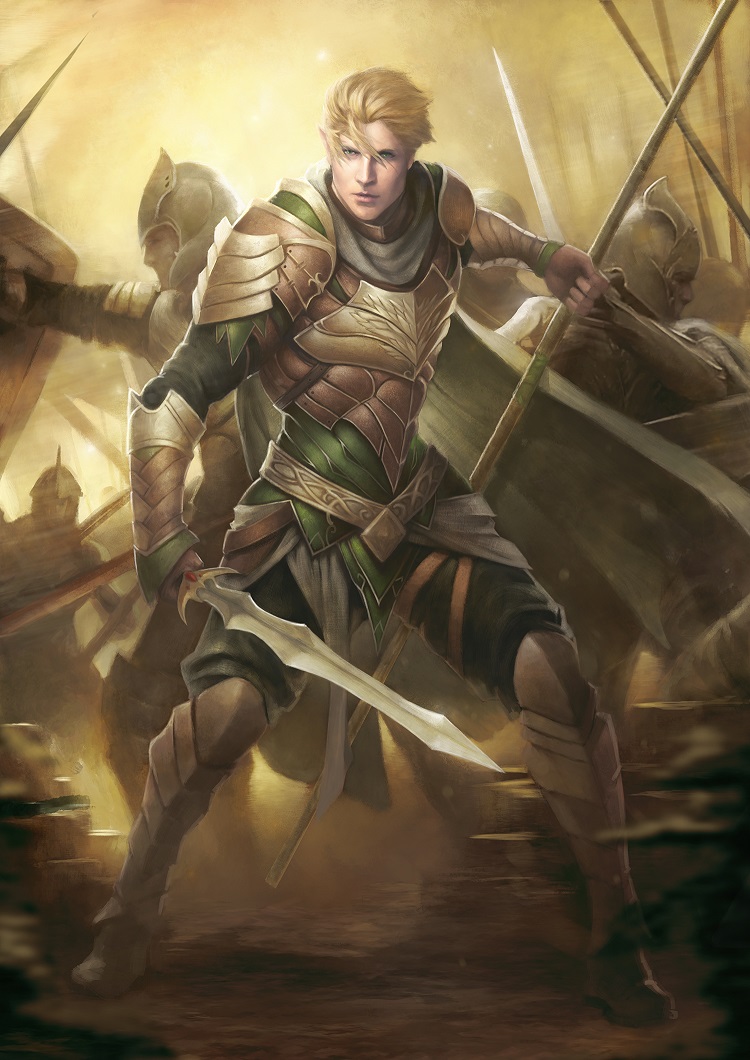
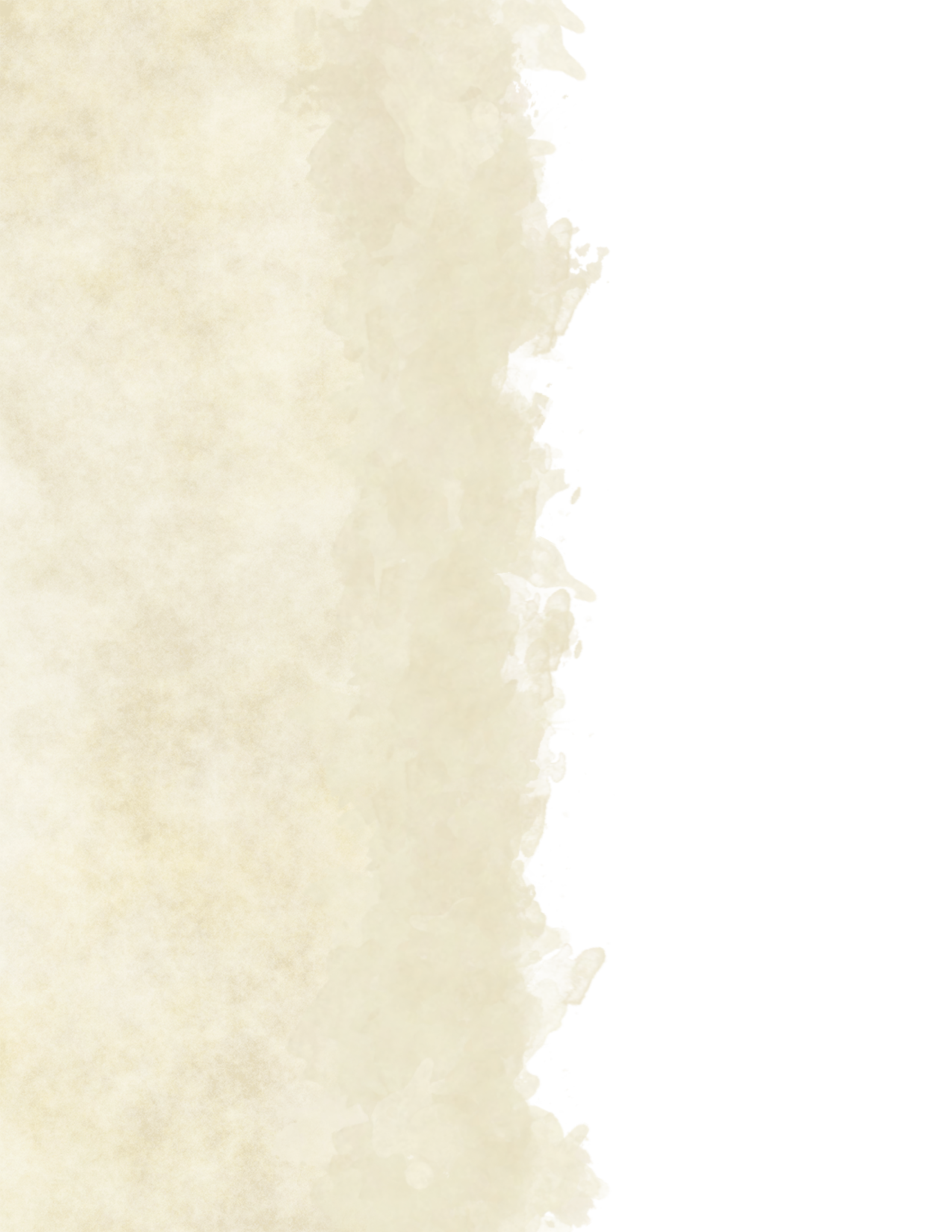
Combat Maneuvers
The maneuvers are presented in alphabetical order.
Bait & Switch. When you are within 5 feet of a willing creature, and either one of you is the target of an attack, you can use your reaction to switch places with that creature, including who of you becomes the target of the attack.
You can also expend one superiority die and add the number rolled to the new target's AC against that attack.
Neither you nor the chosen creature must be prone or has its movement speed reduced to 0 in order to use this maneuver.
Brace. As a bonus action, you can set yourself up against incoming enemies. Until the beginning of your next turn, creatures provoke an opportunity attack from you when they enter your reach.
Cleaving Attack. When you hit a creature with a melee weapon attack and reduce it to 0 hit points, you can assign any excess damage to another creature adjacent to you, provided that your initial attack roll is equal to or greater than the other creature's AC.
Coordinated Assault. When you take the Attack action on your turn, you can forgo one of your attacks to direct one of your companions to attack as well. When you do so, choose a friendly creature that can hear you within 30 feet. That creature can immediately use its reaction to make one weapon attack.
Disarming Attack. When you hit a creature with a weapon attack, you can use a bonus action and attempt to disarm the target (see Dungeon Master's Guide p.271). If successful, the item lands in a random square within 5 feet of the target.
Distracting Attack. When you hit a creature with a weapon attack, you can use a bonus action to take the Help action to give one ally advantage on the next attack roll against the same target.
Deflect. When a creature you can see hits you or a target within 5 feet of you with an attack, you can use your reaction to reduce the damage the target takes by your Dexterity modifier + your proficiency bonus.
You can also expend one superiority die to further reduce the damage by the number rolled.
You must be wielding a shield or a weapon to use this maneuver.
Feint. You can use a bonus action on your turn to feint, choosing one creature within 10 feet of you as your target. The target must make an Intelligence saving throw. On a failed save, you have advantage on your next attack roll against that creature this turn.
Goading Attack. When you hit a creature with a weapon attack, you can use a bonus action to attempt to goad the target into attacking you. The target must make a Wisdom saving throw. On a failed save, the target has disadvantage on all attack rolls against targets other than you until the end of your next turn.
Grapple. If you have at least one free hand, you can use a bonus action on your turn to try to grapple a creature. If you do, you can expend a superiority die and add it to your Strength (Athletics) check.
Lunging Attack. When you make a melee weapon attack on your turn, you can use a bonus action to increase your weapon's reach by 5 feet until the end of your turn.
Menacing Attack. When you hit a creature with a weapon attack, you can use a bonus action to attempt to frighten the target. The target must make a Wisdom saving throw. On a failed save, it is frightened of you until the end of your next turn.
Pushing Attack. When you hit a creature with a weapon attack, you can use a bonus action to make a Shove attempt against the target. If you succeed, you push the target 5 feet away. If you made a melee attack and have movement left, you can move into the square the target was pushed out of and make another Shove attempt (no action required). You can repeat this process until you either fail a Shove attempt or have no more movement left.
Quick Surveillance. You can take the Search action as a bonus action on your turn.
Quick Toss. As a bonus action, you can make a ranged attack with a weapon that has the thrown property. You can draw the weapon as part of making this attack.
Repositioning Attack. When you hit a creature with a weapon attack, you can use a bonus action to direct one of your companions into a more advantageous position. Choose a friendly creature that can hear you within 30 feet. That creature can use its reaction to move up to half its speed without provoking opportunity attacks from the target of your attack.
Riposte. As a bonus action, you can set yourself up to exploit your enemy's mistakes. Until the beginning of your next turn, creatures provoke an opportunity attack from you when they miss you with a melee attack.
Skirmish. You can take the Disengage action as a bonus action on your turn.
Sprint. You can take the Dash action as a bonus action on your turn.
Staggering Attack. When you hit a creature with a weapon attack, you can use a bonus action to attempt to stagger the target's movement. The target must make a Dexterity saving throw. On a failed save, the target's speed is halved until the beginning of your next turn.
Tripping Attack. When you hit a creature with a weapon attack, you can use a a bonus action to make a Shove attempt. If you succeed, the target is knocked prone.
Martial Archetypes
Different fighters choose different approaches to perfecting their fighting prowess. The martial archetype you choose to emulate reflects your approach.
Eldritch Knight
The Eldritch Knight combines the martial mastery common to all fighters with a careful study of magic. Eldritch Knights use magical techniques similar to those practiced by wizards. They focus their study on spells that help them in battle. Abjuration spells for additional protection, evocation spells to deal damage to many foes at once, or transmutation spells to bolster their own capabilities. These knights learn a comparatively small number of spells, committing them to memory instead of keeping them in a spellbook.
Spellcasting
When you choose this archetype at 3rd level, you augment your martial prowess with the ability to cast spells. See chapter 10 for the general rules of spellcasting and chapter 11 for the wizard spell list.
Cantrips
You learn two cantrips of your choice from the wizard spell list, and one additional wizard cantrip of your choice at 10th level, as shown in the Cantrips Known column of the Eldritch Knight Spellcasting table.
Spell Slots
The Eldritch Knight Spellcasting table shows many spell slots you have to cast your spells of 1st level and higher. To cast one of these spells, you must expend a slot of the spell's level or higher. You regain all expended spell slots when you finish a long rest.
For example, if you know the 1st-level spell shield and have a 1st-level and a 2nd-level spell slot available, you can cast shield using either slot.
Spells Known of 1st Level and Higher
You know three 1st-level wizard spells of your choice from the wizard spell list.
The Spells Known column of the Eldritch Knight Spellcasting table shows when you learn more wizard spells of 1st level or higher. Each of these spells must be of a level for which you have spell slots. For instance, when you reach 7th level in this class, you can learn one new spell of 1st or 2nd level.
Additionally, when you gain a level in this class, you can choose one of the wizard spells you know and replace it with another spell from the wizard spell list, which also must be of a level for which you have spell slots.
Spellcasting Ability
Intelligence is your spellcasting ability for your wizard spells, since you learn your spells through study and memorization. You use your Intelligence whenever a spell refers to your spellcasting ability. In addition, you use your Intelligence modifier when setting the saving throw DC for a wizard spell you cast and when making an attack roll with one.
Eldritch Knight Spellcasting
| Fighter Level |
Cantrips Known |
Spells Known |
1st | 2nd | 3rd | 4th |
|---|---|---|---|---|---|---|
| 3rd | 2 | 3 | 2 | — | — | — |
| 4th | 2 | 3 | 3 | — | — | — |
| 5th | 2 | 4 | 3 | — | — | — |
| 6th | 2 | 4 | 3 | — | — | — |
| 7th | 2 | 5 | 4 | 2 | — | — |
| 8th | 2 | 5 | 4 | 2 | — | — |
| 9th | 2 | 6 | 4 | 2 | — | — |
| 10th | 3 | 6 | 4 | 3 | — | — |
| 11th | 3 | 7 | 4 | 3 | — | — |
| 12th | 3 | 7 | 4 | 3 | — | — |
| 13th | 3 | 8 | 4 | 3 | 2 | — |
| 14th | 3 | 8 | 4 | 3 | 2 | — |
| 15th | 3 | 9 | 4 | 3 | 2 | — |
| 16th | 3 | 9 | 4 | 3 | 3 | — |
| 17th | 3 | 10 | 4 | 3 | 3 | — |
| 18th | 3 | 10 | 4 | 3 | 3 | — |
| 19th | 3 | 11 | 4 | 3 | 3 | 1 |
| 20th | 3 | 11 | 4 | 3 | 3 | 1 |
Spell save DC = 8 + your proficiency bonus +
your Intelligence modifier
Spell attack modifier = your proficiency bonus +
your Intelligence modifier
Weapon Bond
At 3rd level, you learn a ritual that creates a magical bond between yourself and one weapon.
You perform the ritual over the course of 1 hour, which can be done during a short rest, and you must hold the weapon during the entire time.
You can have up to two bonded weapons. If you attempt to bond with a third weapon, you must break the bond with one of the other two.
Once you have bonded with a weapon, you gain the following benefits:
- You can't be disarmed of that weapon unless you are incapacitated.
- If it is on the same plane of existence, you can summon that weapon into your hand when you would normally be able to draw the weapon.
- You can use your bonded weapons as a spellcasting focus for your wizard spells, and you can perform the somatic components of your wizard spells while holding your bonded weapons.
War Magic
At 7th level, you begin to blur the boundaries between weapon and spell craft.
You can apply Superiority Dice to spells you cast that require you to make a spell attack roll. If the spell includes multiple attack or damage rolls, you add the superiority die to one of these rolls.
In addition, you can apply certain Combat Maneuvers when hitting a target with a spell attack. If the spell affects multiple targets, you choose one of those to apply the maneuver effect to. (You can apply any maneuver with "attack" in its name.)
Eldritch Strike
At 11th level, you learn how to empower your weapon strikes with arcane might in order to undercut a creature's resistance to your spells.
When you hit a creature with your bonded weapon, that creature has disadvantage on the next saving throw it makes against a spell you cast before the end of your next turn.
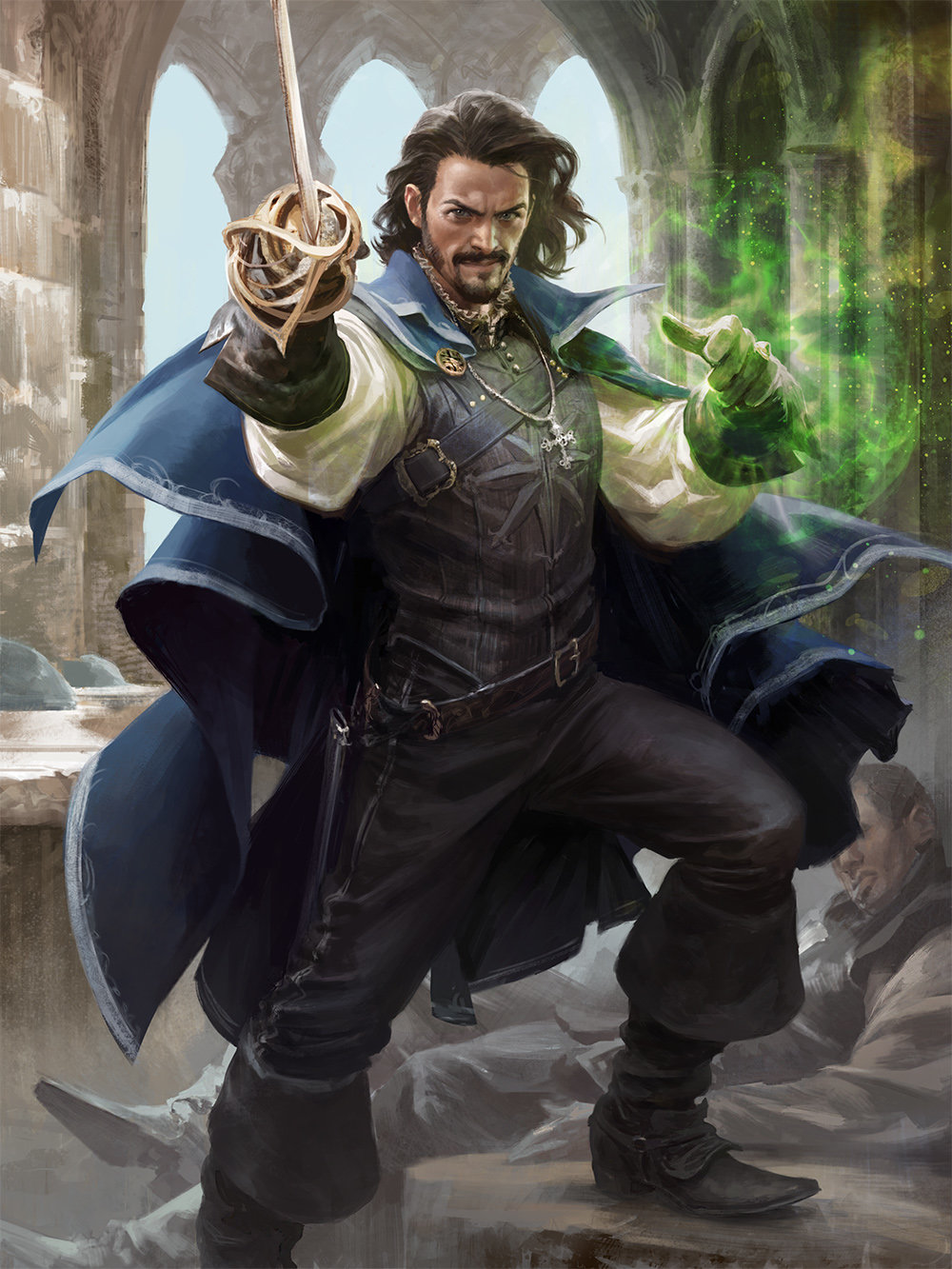
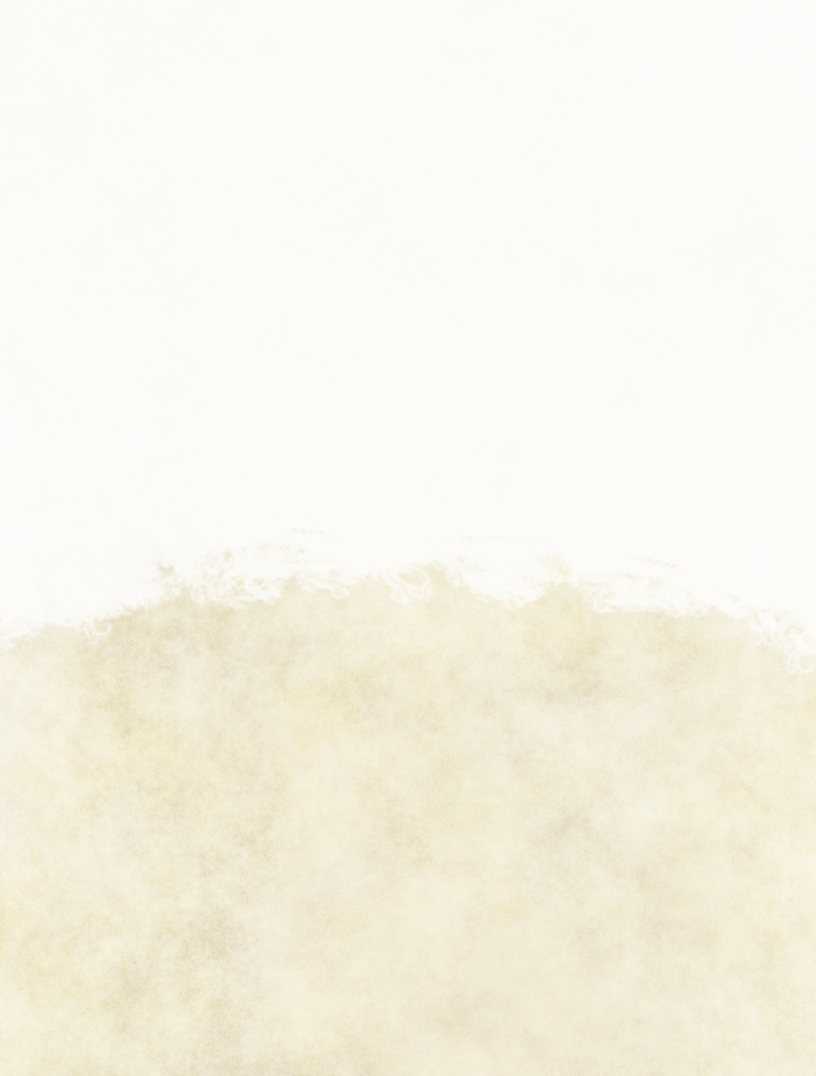
Improved War Magic
At 15th level, you have learned how to fully interweave your spells with your martial prowess.
When you use your action to cast a spell, you can make a single weapon attack as a bonus action.
Arcane Superiority
At 20th level, you have learned how to draw on your arcane reserves.
As a bonus action on your turn, you can expend one superiority die to regain one of your expended spell slots. The spell slot must be of a level no higher than the roll of the die divided by 3 (round up).
You can use this feature a number of times equal to your proficiency bonus, and you regain all expended uses when you finish a long rest.
Sentinel
Sentinels are striving to prove that the best offense is a good defense. They are normally found on the front lines of battle, holding a position to cover their allies, leaping into breaches of opposing formations and holding them open for others, or guarding more vulnerable allies by acting as mobile fortifications, stable points in the ever-changing chaos of battle. Sentinels place their whole effort into weathering whatever foe, conflict, or threat comes their way.
Retaliation Tactics
When you choose this archetype at 3rd level, have learned to bide your time and strike when the enemy is vulnerable.
You learn the Brace and Riposte combat maneuvers.
In addition, whenever you are allowed to make a weapon attack, you can forgo the attack to gain a special reaction instead. You can use this special reaction only to make an opportunity attack or to use your Warding Maneuver, and you can’t use more than one reaction for the same provoking trigger. You lose any unused special reactions at the beginning of your next turn.
Warding Maneuver
Also at 3rd level, you learn to fend off strikes directed at you or other creatures nearby.
If you or a creature you can see within 5 feet of you is hit by an attack, you can expend one superiority die as a reaction. Roll the die and add the result to the target’s AC until the end of the current turn. If the attack still hits, the target has resistance against the attack’s damage.
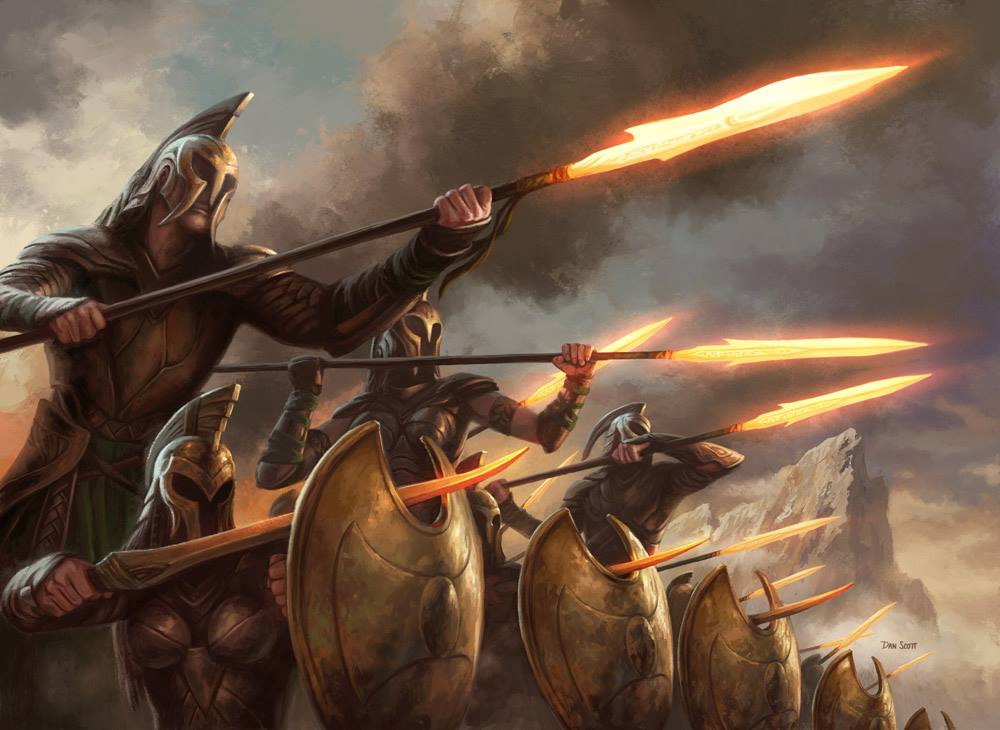
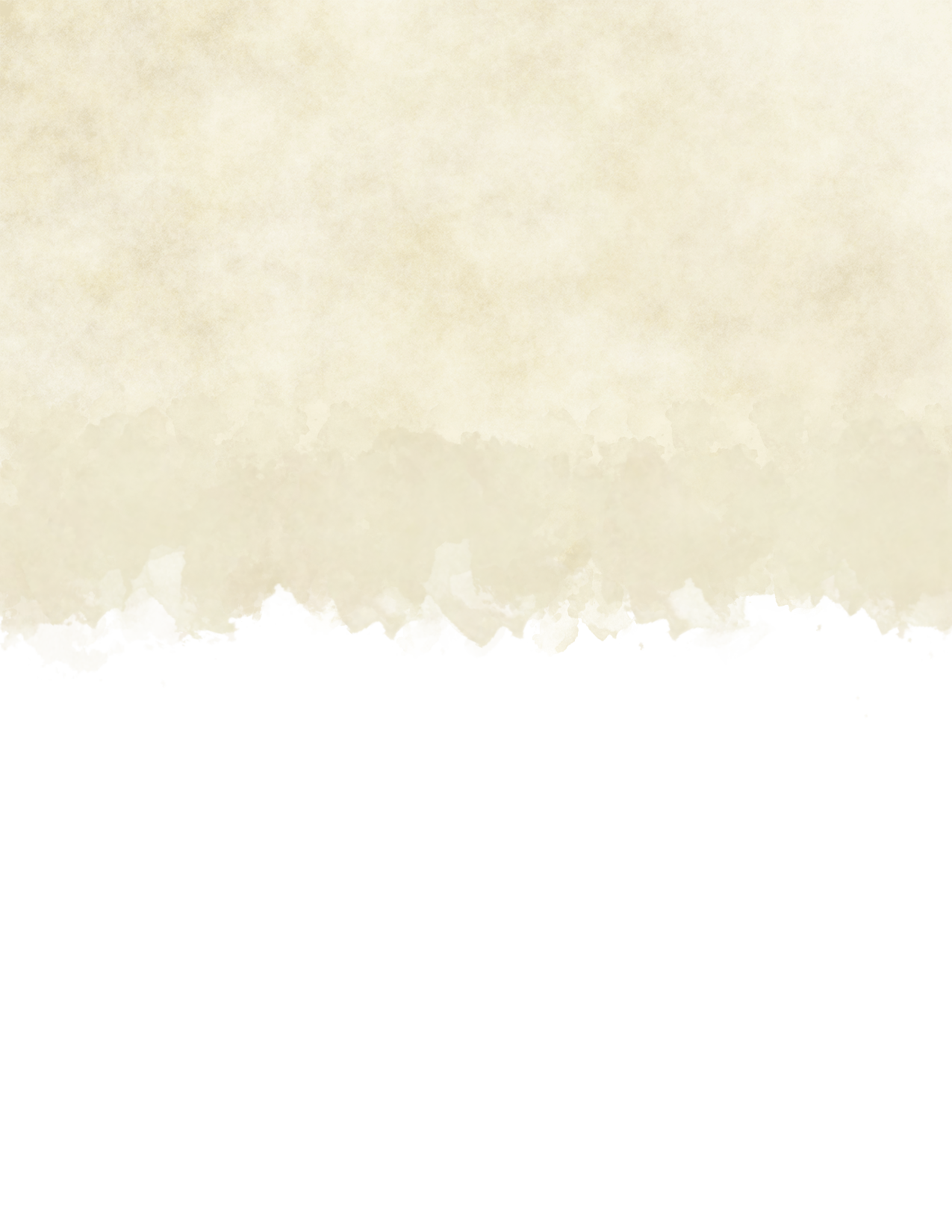
Stalwart Defense
At 7th level, you become nigh untouchable while in a defensive stance.
Whenever you use your action to take the Dodge action, you gain resistance to bludgeoning, piercing, and slashing damage until the beginning of your next turn.
In addition, when you take the Dodge action, you can use a bonus action to make a single weapon attack.
Hold the Line
Starting at 11th level, you know how to bind your enemies to you.
Creatures provoke an opportunity attack from you when they move 5 feet or more while within your reach.
In addition, creatures still provoke opportunity attacks from if they take the Disengage action, however you have disadvantage on your attack rolls against that creature until the end of their turn.
Finally, whenever you hit a creature with an opportunity attack, the target’s speed is halved until the end of the current turn.
Deadly Opportunist
At 15th level, you've become most dangerous when striking unexpectedly.
Whenever you make an attack outside your normal turn in combat, you have advantage on the attack roll.
Ever Vigilant
At 20th level, you respond to danger with extraordinary vigilance.
Creatures provoke an opportunity attack from you if they attack anyone other than you.
In addition, you regain your reaction at the start of every creature's turn (not just your own).
Skirmisher
Skirmishers understand that cunning and guile are just as important to win a fight as raw martial prowess and that the best battle tactic is the one that wins the fight before the enemy even realizes that they are under attack.
Skirmishers value mobility and stealth. They try to catch their opponents off guard and once battle begins, they deploy hit-and-run tactics to pick their enemies apart.
Bonus Proficiency
When you choose this archetype at 3rd level, you gain proficiency in one of the following skills of your choice: Acrobatics, Athletics, Nature, Perception, Stealth, or Survival.
As well as proficiency with one language, kit, or artisan's tools of your choice.
Skilled Skirmisher
At 3rd level, you have learned how to quickly move across the battlefield.
You learn the Skirmish and Sprint combat maneuvers.
In addition, whenever you make a Dexterity (Acrobatics) or Dexterity (Stealth) check, you can expend one of your superiority dice and add it to the final result.
Ambuscade
Starting at 3rd level, you are at your deadliest when you get the drop on your enemies.
You have advantage on attack rolls against any creature that hasn't taken a turn in the combat yet
In addition, any hit you score against a creature that is surprised is a critical hit.
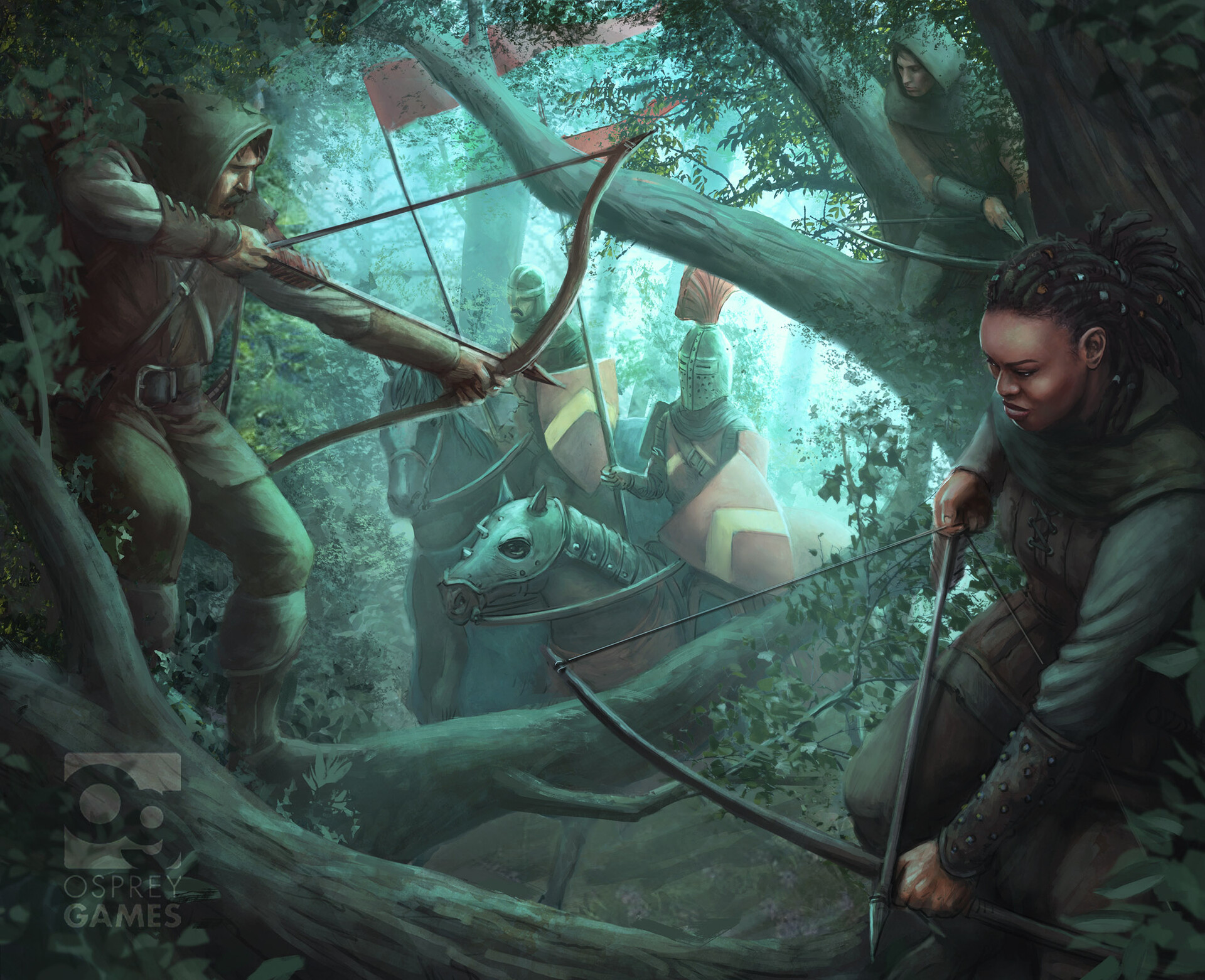

Quick Stride
Starting at 7th level, you can swiftly move where others struggle.
While you aren't wearing heavy armor, your speed increases by 10 feet and moving through nonmagical difficult terrain — as well as climbing and swimming — costs you no extra movement.
Hit-and-Run
At 11th level, moving through enemy ranks becomes second nature to you.
Opportunity attacks against you are made with disadvantage, and if you hit a creature with a weapon attack, that creature can’t make opportunity attacks against you for the rest of your turn.
Stalker’s Flurry
At 15th level, you learn to attack with such unexpected speed that you can turn a miss into another strike.
Once on each of your turns when you miss with a weapon attack, you can make another weapon attack as part of the same action.
Deadly Ambush
At 20th level, you can overwhelm your opponents with a deadly barrage when catching them off guard.
On the first turn of combat, you can use your Action Surge immediately after your own turn.
In addition, any hit you score against a creature that hasn't taken a turn in the combat yet is a critical hit.
Swordmaster
Those who emulate the archetypal Swordmaster see combat and war as a form of art they seek to master. The battlefield is their canvas, and when they swing their weapon, they do so like a calligraph swings their brush.
Not every fighter absorbs the lessons of history, theory, and artistry that are reflected in the Swordmaster archetype, but those who do are extraordinary fighters of great skill and knowledge.
Weapon Focus
When you choose this archetype at 3rd level, you choose two types of weapons (e.g. battleaxe or longbow) to be your focused weapons.
When making an attack with your focused weapons, you gain the following benefits:
- You score a critical hit on a roll of 19 or 20 on the d20.
- When you add a superiority die to the attack or damage roll, you can reroll the die, but you must use the second result.
- Your proficiency bonus is doubled when calculating your maneuver save DC.
Student of War
Also at 3rd level, you learn two combat maneuvers of your choice, and you learn two additional combat maneuvers at 7th, 11th, 15th, and 20th level.
In addition, you gain two proficiencies of your choice from among any Intelligence skills, artisan's tools, kits, gaming sets, musical instruments, or languages.
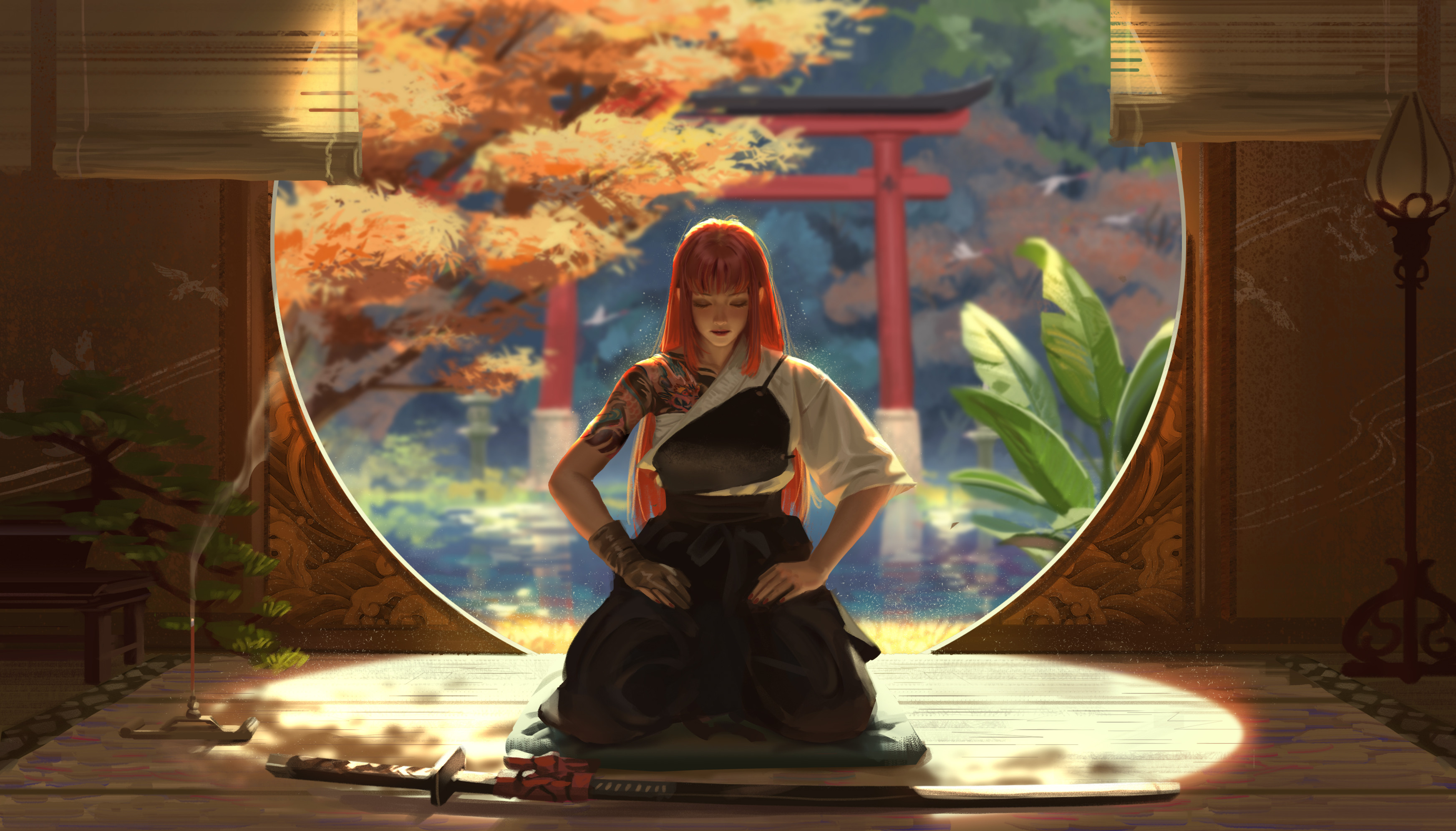

Disciplined Mind
Starting at 7th level, your discipline and self-control allow you to withstand assaults on your mind.
When making an Intelligence, Wisdom, or Charisma saving throw, you can expend one of your superiority dice and add it to the final result.
Superior Critical
Starting at 11th level, your attacks with your focused weapons score a critical hit on a roll of 18-20 on the d20.
Rapid Strike
Starting at 15th level, you learn to trade accuracy for swift strikes.
If you have advantage on an attack roll using your focus weapons, you can forgo the advantage for that roll to make an additional weapon attack against the same target, as part of the same action. You can do so no more than once per turn.
Martial Supremacy
At 20th level, your martial prowess is second to none.
You regain one superiority die at the start of each of your turns.
In addition, when you expend a superiority die on an attack or damage roll with your focused weapons, you can choose to use the maximum result instead of rolling the die. If you do, you can't do so again until the beginning of your next turn.
Vanguard
The Vanguard draws on an implacable fighting spirit to overcome their enemies. They throw themselves headfirst into battle without any regard for their own safety. A Vanguard’s resolve is nearly unbreakable, and the enemies in a Vanguard’s path have two choices: yield or die.
Ferocious Charger
Starting when you choose this archetype at 3rd level, you learn how to overpower your foes.
You learn the Pushing Attack and Tripping Attack maneuvers.
In addition, whenever you make a Shove attempt, you can expend one of your superiority dice and add it to your Strength (Athletics) check.
Reckless Assault
Also starting at 3rd level, you can throw aside all concern for defense to attack with fierce determination.
When you make your first attack on your turn, you can decide to attack recklessly. Doing so gives you advantage on melee weapon attack rolls during this turn, but attack rolls against you have advantage until your next turn.
Fighting Spirit
Starting at 7th level, your intensity in battle can shield you from harm.
You can use a bonus action on your turn to gain a number of temporary hit points equal to your fighter level.
You can use this feature a number of times equal to your proficiency bonus, and you regain all expended uses of it when you finish a long rest.
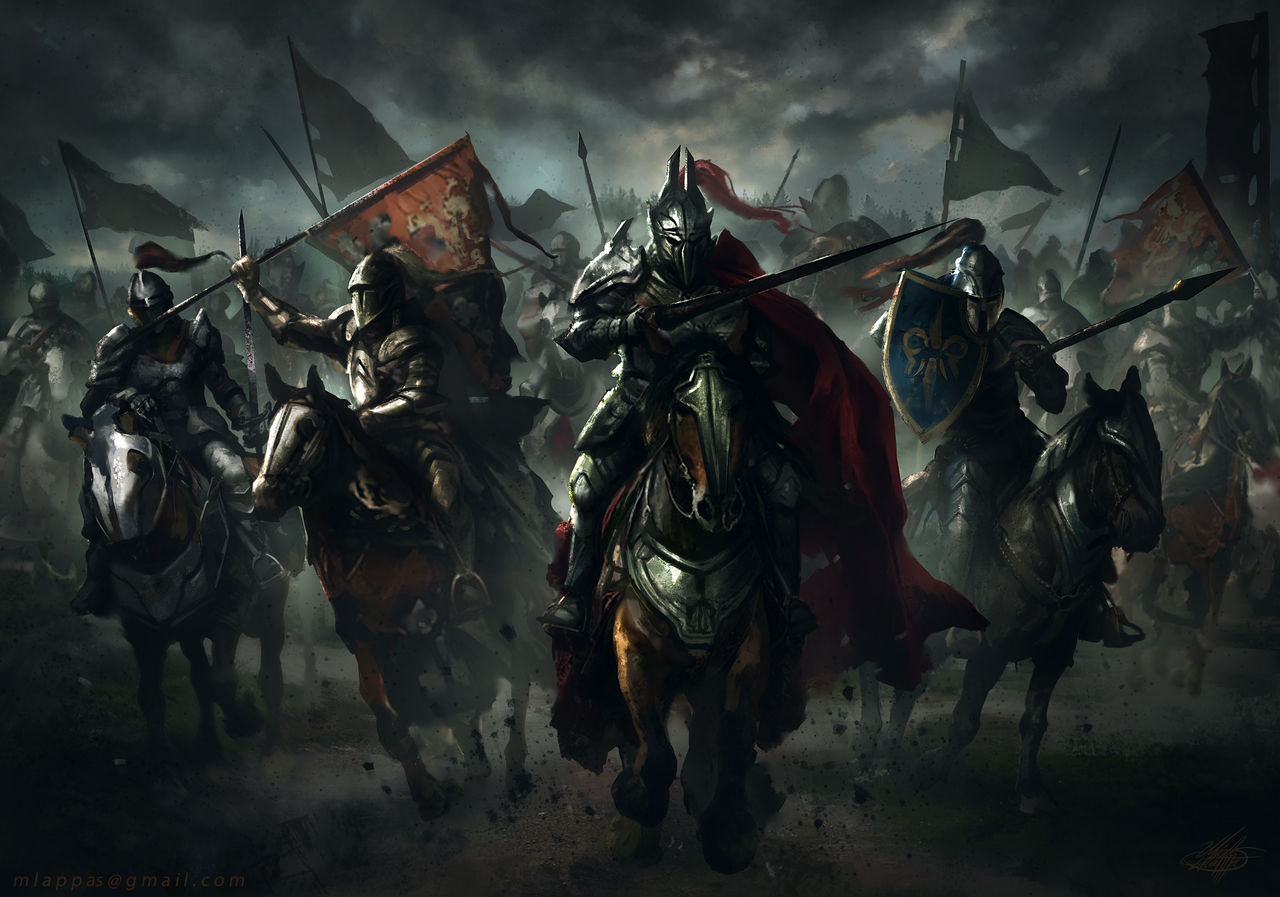

Strength before Death
Starting at 11th level, your fighting spirit can delay the grasp of death.
If you take damage that reduces you to 0 hit points and doesn't kill you outright, you can delay falling unconscious by taking an Action Surge immediately after the current turn.
While you have 0 hit points, taking damage causes death saving throw failures as normal, and three death saving throw failures can still kill you. When the Action Surge turn ends, you fall unconscious if you still have 0 hit points.
Once you use this feature, you can't use it again until you finish a short or long rest.
Retaliating Force
Starting at 15th level, your attacks become wilder and more dangerous when defeat draws near.
While you have no more than half your hit points left, your weapon attacks deal an additional 1d8 damage. This damage is of the same type as your weapon's.
Invincible
At 20th level, your will to fight can't be bend nor broken.
At the start of each of your turns, if you have no more than half of your hit points left, you can choose to regain hit points equal to 5 + your Constitution modifier. You don't gain this benefit if you have 0 hit points.
In addition, you can use a bonus action on your turn to regain one use of your Fighting Spirit.
New and Revised Feats
These Feats are optional but recommended.
Combat Training (new)
replacing Fighting Initiate, Heavily/Lightly/Moderately Armored and Weapon Master
Prerequisite: Strength or Dexterity 13 or higher
You can select this feat multiple times.
You have practiced extensively with a variety of weapons.
You gain proficiency with all simple weapons and can choose two of the following benefits:
- Increase your Strength, Dexterity, or Constitution score by 1, to a maximum of 20.
- You gain proficiency with all martial weapons.
- You gain proficiency with all armor and shields.
- You learn one Fighting Style option of your choice from the fighter class. If you already have a style, the one you choose must be different.
Dual-Wielding Master (revised)
former Dual Wielder
Prerequisite: Strength or Dexterity 13 or higher
You master fighting with two weapons, gaining the following benefits:
- You learn the Dual-Wielding Fighting Style or you can increase your Dexterity score by 1, to a maximum of 20.
- You gain a +1 bonus to AC while you are wielding a separate melee weapon in each hand.
- You can use two-weapon fighting even when the one-handed melee weapons you are wielding aren't light.
- When you engage in two-weapon fighting, you do not expend your bonus action to make the second attack. You can still gain the benefits of two-weapon fighting only once during your turn.
Great Weapon Master (revised)
Prerequisite: Strength 13 or higher
You've learned to put the weight of a weapon to your advantage, letting its momentum empower your strikes.
- You learn the Great Weapons Fighting Style or you can increase your Strength score by 1, to a maximum of 20.
- Before you make a melee attack with a weapon that you are wielding with two hands, you can choose to take a penalty to the attack roll equal to your proficiency bonus. If the attack hits, your weapon deals additional damage equal to twice your proficiency bonus. You must be proficient with the weapon and it must have the two-handed or versatile property for you to gain this benefit.
Martial Adept (revised)
Prerequisite: Strength or Dexterity 13 or higher
You have martial training that allows you to perform special combat maneuvers. You gain the following benefits:
- If you already have superiority dice, you gain two more; otherwise, you have two superiority dice, which are d4s. See the fighter's Martial Superiority feature on how to use and regain your superiority dice.
- You also learn two combat maneuvers of your choice from among those available to the fighter class. If a maneuver you use requires your target to make a saving throw to resist the maneuver’s effects, the saving throw DC equals 8 + your proficiency bonus + your Strength or Dexterity modifier (your choice).
Polearm Master (revised)
Prerequisite: Strength or Dexterity 13 or higher
You can keep your enemies at bay with reach weapons. You gain the following benefits:
- When you are wielding a javelin, quarterstaff, spear, or trident with one hand, the weapon gains the reach property.
- While you are wielding a weapon with the reach property, other creatures provoke an opportunity attack from you when they enter your reach.
- When you are wielding a glaive, halberd, quarterstaff, spear, or trident with two hands, you can treat the opposite end of the weapon as a club and use it to engage in two-weapon fighting against targets within 5 feet of you.
Sharpshooter (revised)
Prerequisite: Dexterity 13 or higher
You have mastered ranged weapons and can make shots that others find impossible.
- You learn the Archery Fighting Style or you can increase your Dexterity score by 1, to a maximum of 20.
Whenever you make an attack with a ranged weapon that you are proficient with, you gain the following benefits:
- Attacking at long range doesn't impose disadvantage on your ranged weapon attack rolls.
- Before you make a ranged attack, you can choose to take a penalty to the attack roll equal to your proficiency bonus. If the attack hits, your weapon deals additional damage equal to twice your proficiency bonus.
From a Fan
For Fans
I always thought that D&D treated the Fighter as the unwanted stepchild that lives in the cupboard under the staircase — its features mostly bland and boring.
I always loved the idea of the Fighter being the class that represents the archetypical folk hero. The one hero that every normal person could relate and look up to, as they don't rely on supernatural powers.
Likewise, I always loved the idea of the Fighter eventually becoming to a legendary creature, by including features similar to legendary actions and resistances.
I hope you will feel legendary when playing
The Legendary Fighter.
Created by DracoDruid
[@GMBinder | @Reddit]
Cover Art: 'Soldier Token' by Magali Villeneuve
created for Magic the Gathering TCG
Format: DIN A4
Additional Brews
The Focused Ranger
Always loved to play Rangers but were utterly disappointed by the way 5e treated them?
The Spellblade
Always thought that there was a true gish class missing?
The Promised Warlock
Always thought the pact choice should have a bigger impact on your warlock and that the pact blade should work without the Hexblade Patron?
The Sorcerer Revisited
Always thought that the pact magic and invocation mechanics would work perfectly for a sorcerer?
The Zealous Paladin
Always thought that Smite shouldn't use spell slots, but rather have you choose between healing the brave or smiting the wicked?
The Blood Hunter Revisited
Always thought the blood hunter could be a little better?
The Soulmonger
Always thought the Hexblade was just an obvious patch for the pact blade and rather wished for a less on the nose Patron from the Shadowfell?
Circle of Primal Might
Always dreamed of turning into giant dinosaurs and devour your enemies?
Path of the Stormbringer
Always wished you could become Thor - God of Thunder and Lightning?
Way of the Radiant Soul
Always wanted to live out your Super Saiyan fantasy?
Untamed Orcs
Always loved Orcs and wished they were portrayed as a more complex race?
Dragonborn Reborn
Always loved the Dragonborn but felt a little disappointed?
Humans
Always felt that Humans got the short end of the creative stick in 5e?
Warforged Reforged
Always loved the Warforged but felt a little disappointed?
